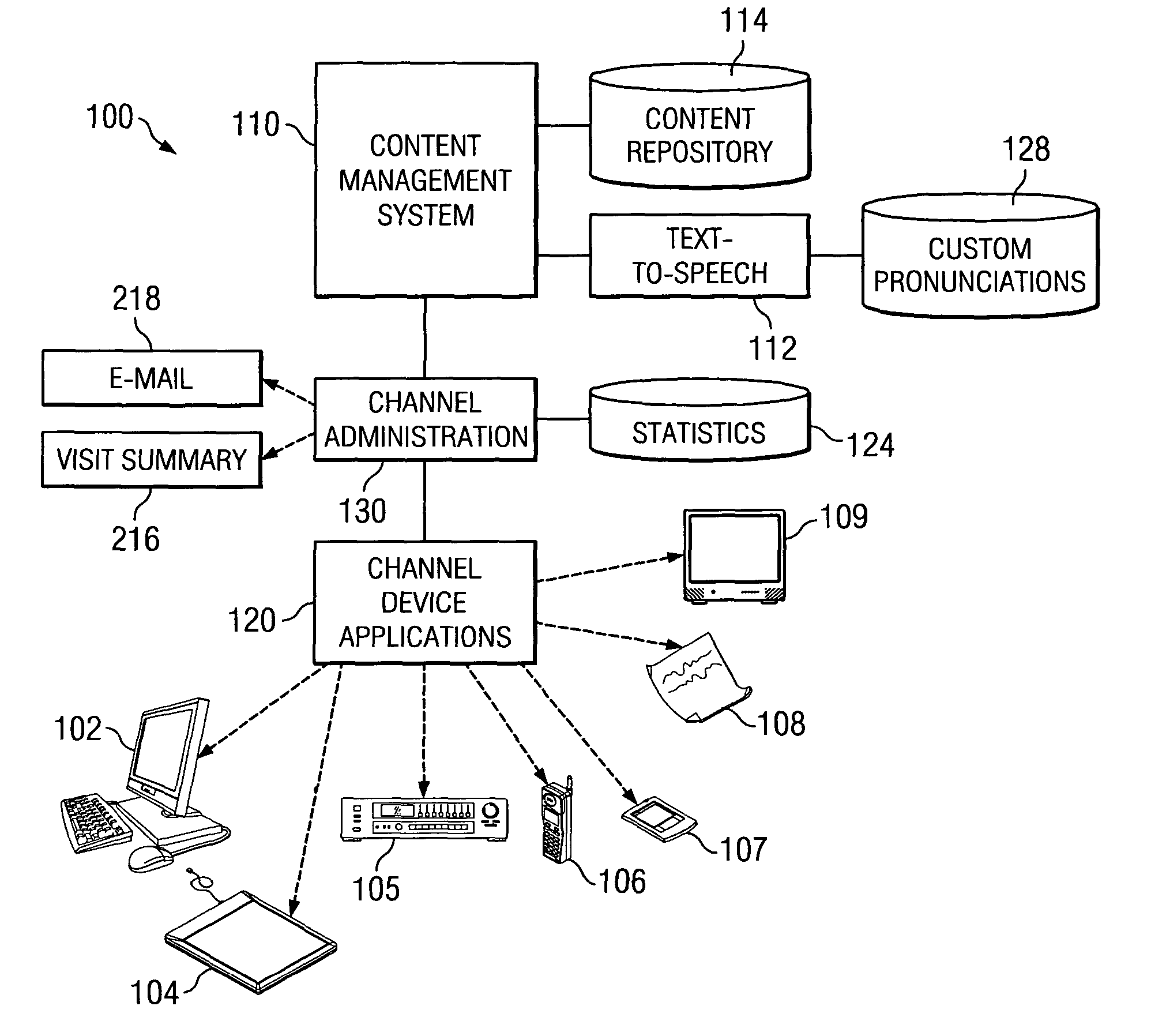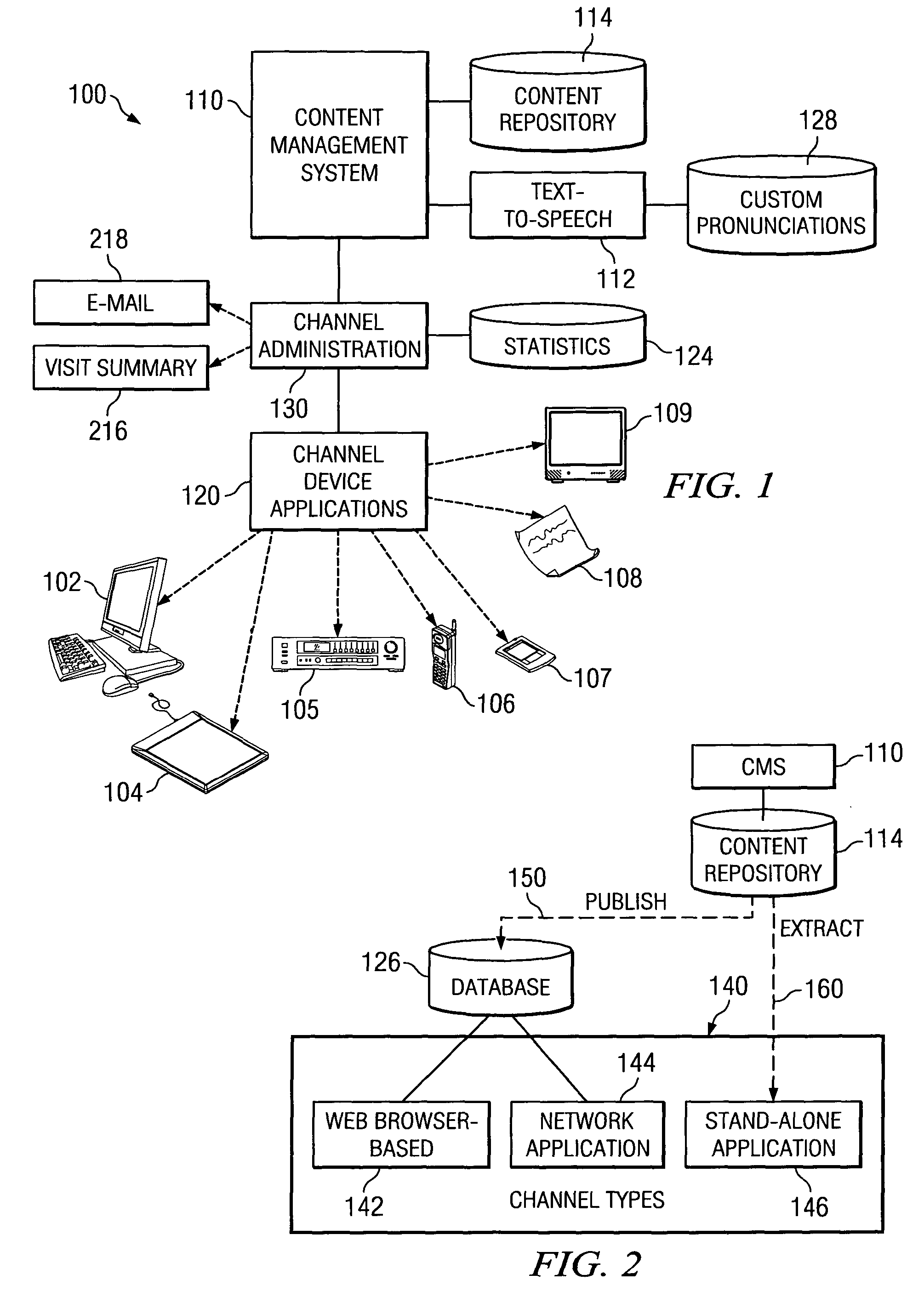Digital guide system
a technology of digital guide system and guide, applied in the field of digital guide system, can solve the problems of limited information that can be provided on each object, difficulty in updating the content of the tour, and limited interactivity with the recorded tex
- Summary
- Abstract
- Description
- Claims
- Application Information
AI Technical Summary
Benefits of technology
Problems solved by technology
Method used
Image
Examples
Embodiment Construction
[0045]As used herein, the term “access right(s)” shall mean one or more of the following rights assigned to an individual so that the individual can complete tasks within a Content Management System application (CMS): add, edit, delete, approve, publish and / or view.
[0046]As used herein, the term “attribute” shall mean, a basic item of content information created by a content manager, and available for use by an author in creating an element.
[0047]As used herein, the term “channel” shall mean a medium for carrying content information in digital form and presenting the content information in an audio, visual or audio visual display.
[0048]As used herein, the term “channel administration application” shall mean (1) a program for delivering content information to a channel device application where the channel device application has been assigned to the content information by a content management system, and / or (2) a program for collecting user demographics, generating statistical data fr...
PUM
 Login to View More
Login to View More Abstract
Description
Claims
Application Information
 Login to View More
Login to View More - R&D
- Intellectual Property
- Life Sciences
- Materials
- Tech Scout
- Unparalleled Data Quality
- Higher Quality Content
- 60% Fewer Hallucinations
Browse by: Latest US Patents, China's latest patents, Technical Efficacy Thesaurus, Application Domain, Technology Topic, Popular Technical Reports.
© 2025 PatSnap. All rights reserved.Legal|Privacy policy|Modern Slavery Act Transparency Statement|Sitemap|About US| Contact US: help@patsnap.com



